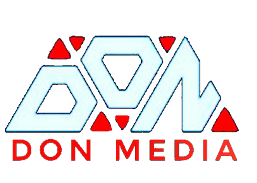ESSENTIAL INSTRUMENTS AND ITEMS FOR SETTING UP A PROFFESSIONAL MUSIC STUDIO
Introduction
Setting up a professional music studio is an exciting endeavor, whether you're a seasoned musician looking to take your craft to the next level or an aspiring producer hoping to make a mark in the industry. However, building a studio that can produce high-quality music requires careful planning and investment in essential instruments and equipment. In this article, we'll explore the must-have items and instruments you need to create a world-class music production environment.
Digital Audio Workstation (DAW):
The heart of any modern music studio is a powerful DAW. Software like Ableton Live, Pro Tools, Logic Pro, or FL Studio serves as your digital canvas for recording, editing, and mixing music. Choose one that aligns with your musical genre and production style.
Computer:
Invest in a robust computer with ample processing power, RAM, and storage capacity. It's the engine that runs your DAW and plugins smoothly.
Audio Interface:
A high-quality audio interface is crucial for connecting your instruments and microphones to your computer. Look for interfaces with low latency, multiple inputs and outputs, and high-resolution audio support.
Studio Monitors:
Accurate studio monitors are essential for mixing and mastering. Choose a pair that reproduces sound faithfully, with a flat frequency response. Invest in acoustic treatment to optimize your studio's acoustics.
Headphones:
Quality headphones are a necessity for tracking, editing, and critical listening. Get a closed-back pair for isolation during recording and an open-back pair for mixing and referencing.
Microphones:
Microphones are the gateway to capturing pristine audio. Invest in a variety, including dynamic mics (e.g., Shure SM7B), condenser mics (e.g., Neumann U87), and ribbon mics (e.g., Royer R-121) for different recording scenarios.
Mic Stands and Accessories:
Mic stands, shock mounts, and pop filters are essential to keep your microphones stable and eliminate unwanted noise during recording.
MIDI Controller:
For electronic music production and virtual instrument control, a MIDI controller keyboard or pad is indispensable. Brands like Novation, Akai, and Native Instruments offer a wide range of options.
Cables and Patchbays:
High-quality cables (XLR, TRS, MIDI) are essential for connecting your gear. Consider a patchbay to streamline routing and organization.
Outboard Gear:
Depending on your production style, consider outboard gear such as compressors, equalizers, and preamps to add character to your recordings. Brands like Universal Audio offer plugins and hardware emulations of classic gear.
Acoustic Instruments:
If your music style includes live instrumentation, invest in high-quality acoustic instruments such as guitars, pianos, and drums. These will be the backbone of your organic sound.
Instrument Amplifiers:
Guitarists and bassists will need amplifiers that suit their playing style. Tube amps like the Fender Deluxe Reverb or versatile modeling amps like the Kemper Profiling Amp are popular choices.
Drum Kit:
For drummers, a well-tuned acoustic drum kit is essential. Alternatively, electronic drum kits like Roland's V-Drums offer versatility and space-saving options.
Studio Furniture:
Soundproofing and Acoustic Treatment:
Digital Plugins:
In addition to outboard gear, digital plugins are invaluable for expanding your sonic palette. Invest in high-quality virtual instruments, effects, and mixing plugins from reputable developers.
Cabling and Wiring Management:
Power Conditioning:
Microphone Preamps:
Reference Monitors:
A secondary pair of reference monitors with a different sonic profile can help you make more informed mixing decisions by providing a fresh perspective.
Control Surfaces:
For tactile control over your DAW, consider adding control surfaces or MIDI controllers tailored to your workflow. The Novation Launch Control or Behringer X-Touch are popular options.
Instrument Tuners and Metronomes:
Keep your instruments in tune and stay on tempo with reliable tuners and metronomes.
Recording Accessories:
Don't forget essentials like studio headphones, extension cords, and a comfortable chair for those long recording sessions.
Backup and Storage:
Invest in reliable backup solutions for your projects, samples, and instrument libraries. Cloud storage and external hard drives are good options.
Instrument Cases and Stands:
Protect your instruments with durable cases and stands to keep them safe and organized.
Instrument Maintenance Tools:
Maintain your instruments with toolkits that include string winders, truss rod wrenches, and cleaning supplies.
Instrument and Vocal Cables:
High-quality cables for your instruments and microphones are essential for maintaining signal integrity.
Instrument and Gear Cases:
Protect your investments with custom-fit cases for your instruments and equipment.
Ear Protection:
Ear protection, such as custom-molded earplugs or isolation headphones, is crucial for preserving your hearing during loud recording sessions.
Instrument and Gear Insurance:
Safeguard your equipment with instrument and gear insurance to protect against theft, damage, or loss.
Conclusion
Setting up a professional music studio requires careful consideration of the essential instruments and items needed to create a productive and inspiring environment. Whether you're recording, producing, or mixing music, investing in high-quality gear will ultimately contribute to the success of your musical endeavors. Remember that your studio setup can evolve over time, so prioritize items based on your immediate needs and expand your collection as your skills and budget allow. With dedication and the right tools at your disposal, you can create music that resonates with audiences and stands the test of time.







.jpg)



.jpg)












.jpg)





Comments